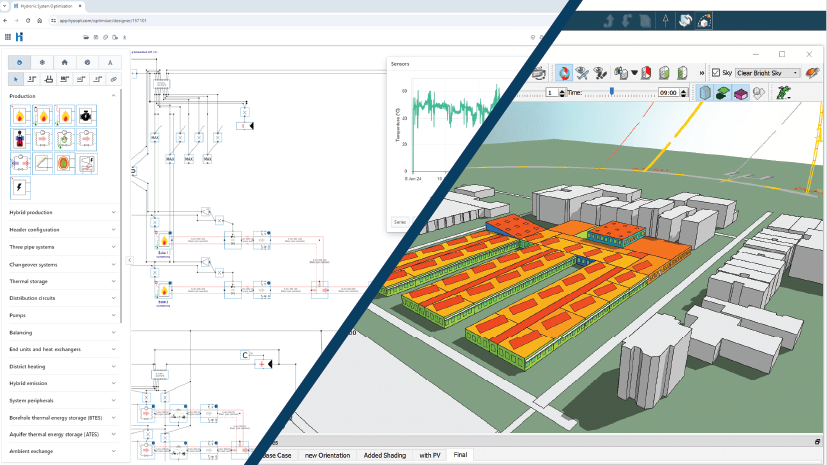The comfort and cost risks of manual tools
Excel remains a go-to for many engineers and consultants. It’s flexible, widely used, and great for quick load calculations or cost comparisons. But spreadsheets weren't designed to simulate the physical behaviour of HVAC systems. And that’s where things start to break down.
A spreadsheet can’t account for the interaction between different circuits, the impact of flow rates on ΔT, or how a system reacts under real load conditions across a building. That’s a problem—because these are exactly the factors that drive energy performance, comfort, and investment value.
Complex HVAC systems need smarter tools
Today’s buildings are more advanced than ever: hybrid heating sources, variable flow loops, heat pump integrations, zone-based controls, and tight comfort requirements. Designing systems that match these complexities requires more than good judgement and formulas—it demands a clear simulation of cause and effect.
HVAC-specific platforms use physical modelling to simulate how a system performs as a whole. That means you can:
- Map out heat losses, pipe flows, and control sequences dynamically
- Identify oversizing and poor balancing before installation
- See how your design decisions impact energy use and emissions
Instead of estimating performance, you can demonstrate it—visually, transparently, and with data.
See how digital modelling improves design accuracy and reduces cost ›
Why spreadsheets increase the performance gap
Many real-world HVAC systems don’t perform as well as promised on paper. The cause? Assumptions made during design—and the limitations of static tools like spreadsheets.
Spreadsheets:
- Don’t track how energy is distributed across the system
- Can’t validate the impact of changing flow temperatures or emitter types
- Miss interactions between design zones
- Rely on manual updates that can introduce hidden errors
These issues often show up during commissioning or months after handover, when correcting them is expensive or impossible. Model-based platforms avoid this by flagging errors and inefficiencies before they reach the site.
From manual calculations to digital confidence
Let’s be clear: spreadsheets still have their place. But when it comes to designing high-performance HVAC systems—especially in large or complex buildings—they're no longer enough on their own.
Digital HVAC platforms don’t just speed up design. They create a shared reference that connects engineers, installers, and stakeholders around one version of the truth. And that improves outcomes across the board: fewer mistakes, better comfort, lower operating costs, and stronger sustainability performance.
See how model-based design supports more efficient HVAC retrofits ›
FAQ: The limits of spreadsheets in HVAC design



.jpg)
